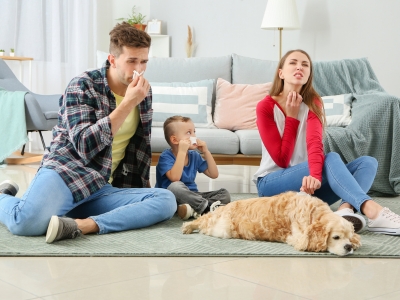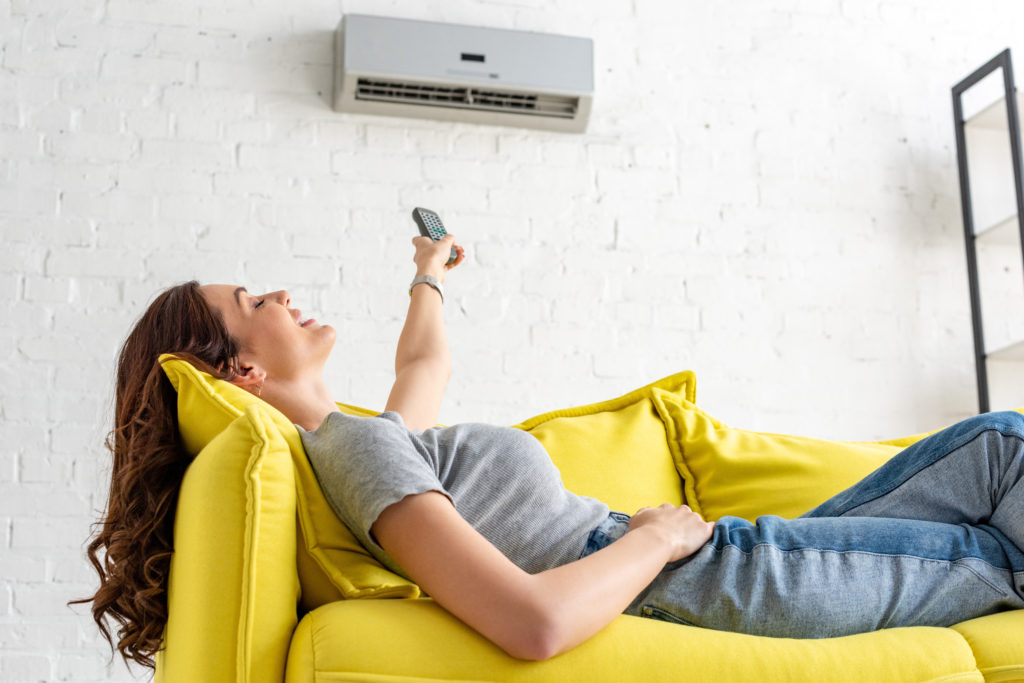How to Improve Indoor Air Quality for Allergy Season
Spring is here, and while warmer weather is a welcome change, allergy season can be a nightmare for those sensitive to pollen, dust, and other airborne allergens. If you’re struggling with sneezing, itchy eyes, or respiratory issues indoors, your home’s air quality could be to blame. The good news is that improving indoor air quality (IAQ) is easier than you think. In this guide, we’ll share expert tips on reducing allergens and keeping your home’s air clean and fresh all season long.
Why Indoor Air Quality Matters During Allergy Season
Poor indoor air quality can make allergy symptoms worse by allowing allergens like pollen, dust mites, pet dander, and mold spores to circulate inside your home. Since Americans spend about 90% of their time indoors (EPA), ensuring clean air is essential for comfort and health.
Top Ways to Improve Indoor Air Quality
1. Upgrade Your Air Filters
A high-quality air filter can make a huge difference in trapping airborne allergens. Use a HEPA (High-Efficiency Particulate Air) filter in your HVAC system to capture 99.97% of airborne particles as small as 0.3 microns (CDC). Make sure to replace filters every 1-3 months for optimal performance.
2. Schedule HVAC Maintenance
A well-maintained HVAC system improves air circulation and filtration. Regular tune-ups ensure your system isn’t circulating dust and allergens throughout your home. Contact Swift Heating & A/C at 435-586-4822 to schedule your spring maintenance.
3. Keep Humidity Levels in Check
Dust mites and mold thrive in high humidity. Maintain indoor humidity between 30-50% by using a dehumidifier or adjusting your HVAC settings (EPA).
4. Use an Air Purifier
Air purifiers with HEPA filters or UV-C technology can help remove allergens, bacteria, and viruses from the air. Place purifiers in frequently used rooms, such as bedrooms and living areas, for maximum effectiveness.
5. Keep Your Home Clean
Vacuum carpets and rugs weekly with a HEPA-filter vacuum.
Wash bedding, curtains, and upholstery regularly to remove dust and pet dander.
Use non-toxic cleaning products to reduce chemical irritants in the air.
6. Ventilate Your Home Properly
Opening windows can help freshen indoor air, but during peak allergy season, it may bring in pollen. Instead, use exhaust fans in kitchens and bathrooms to improve ventilation and reduce indoor pollutants.
7. Add Indoor Plants Wisely
Certain plants, like peace lilies and snake plants, can help filter indoor air naturally. However, avoid overwatering, as damp soil can lead to mold growth, worsening allergies.
Frequently Asked Questions (FAQ)
How Often Should I Change My HVAC Filter During Allergy Season?
For allergy sufferers, changing your HVAC filter every 30-60 days is recommended to keep allergens under control.
Are Air Purifiers Worth It for Allergies?
Yes! HEPA-filter air purifiers can remove up to 99.97% of airborne allergens, helping allergy sufferers breathe easier.
Can My HVAC System Help with Indoor Air Quality?
Absolutely! A properly maintained HVAC system with clean filters and good airflow can significantly reduce indoor allergens. Schedule a tune-up with Swift Heating & A/C to ensure your system is optimized for clean air.
Breathe Easier This Allergy Season
Don’t let allergies ruin your spring! By following these indoor air quality tips, you can create a cleaner, healthier home environment.
Need expert help improving your home’s air quality? Contact Swift Heating & A/C at swiftheatac.com or call 435-586-4822 to schedule your HVAC service today!
Have Questions? Drop a Comment Below!
We’d love to hear from you! What’s your favorite tip for reducing allergens indoors? Share your thoughts in the comments!



Recent Comments